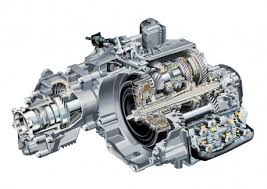Mobile:+86-311-808-126-83
Email:info@ydcastings.com
stainless investment casting
The Advantages of Stainless Steel Investment Casting
Stainless steel investment casting is a highly versatile and efficient manufacturing process that allows for the production of intricate and high-precision components across various industries. This casting method combines the benefits of stainless steel with the intricate design capabilities of investment casting, yielding superior products with excellent mechanical properties. In this article, we will explore the advantages of stainless steel investment casting and its applications in several sectors.
What is Stainless Steel Investment Casting?
Investment casting, also known as lost-wax casting, is a manufacturing process that involves creating a wax pattern of the desired part, which is then coated with a ceramic shell to form a mold. Once the mold is ready, the wax is melted and drained away, leaving a hollow cavity that is filled with molten stainless steel. After the steel cools and solidifies, the ceramic shell is removed, revealing the finished product.
Stainless steel, an alloy primarily consisting of iron, carbon, and other elements like nickel and chromium, is valued for its corrosion resistance, strength, and durability. The combination of stainless steel with investment casting results in components that are not only robust but also lightweight and intricately designed.
Key Advantages
1. Precision and Complexity One of the most significant advantages of stainless steel investment casting is its ability to produce complex geometries with great precision. This process allows for thin walls, tight tolerances, and intricate shapes that would be difficult or impossible to achieve using traditional manufacturing methods. This characteristic is especially crucial in sectors such as aerospace and medical device manufacturing, where precision is paramount.
2. Material Properties Stainless steel offers outstanding corrosion resistance and mechanical properties, making it suitable for a variety of demanding environments. Components made from stainless steel are capable of withstanding high temperatures and pressures, making them a preferred choice for industries such as oil and gas, chemical processing, and food production.
3. Reduced Waste Investment casting is known for its near-net-shape capability. This means that the final product requires minimal machining, which significantly reduces material waste. The process allows manufacturers to make more efficient use of raw materials, which not only lowers costs but also minimizes the environmental impact of production.
stainless investment casting

4. Surface Finish The surface finish of cast components produced through investment casting is typically superior compared to other casting methods. The ceramic shell used in the process provides a smooth finish that often requires little to no additional machining. This is especially valuable in applications where a sleek appearance is desired, or where surface roughness could affect the performance of the component.
5. Versatility Stainless steel investment casting is highly versatile, allowing for the production of parts for a wide range of industries including automotive, aerospace, medical, food processing, and more. Whether producing small components or large assemblies, this method can accommodate various production scales and requirements.
6. Cost-Efficiency for Large Production Runs While the initial setup for investment casting might be higher than for some traditional methods, it becomes cost-effective for large production runs. The ability to create complex shapes with minimal machining not only reduces labor costs but also shortens lead times, enabling quicker delivery to customers.
Applications of Stainless Steel Investment Casting
The applications of stainless steel investment casting are extensive. In the aerospace industry, this process is used to manufacture turbocharger housings, fuel system components, and various other parts that must meet stringent regulatory requirements. In the medical field, high-quality components such as surgical instruments and dental devices benefit from the precision and biocompatibility of stainless steel.
Additionally, the food and beverage industry relies on stainless steel investment casting for valves, pumps, and fittings that must withstand corrosive environments while ensuring hygiene and safety standards. In the energy sector, components for pipelines and pressure vessels are essential and often produced through this method due to their strength and resilience.
Conclusion
Stainless steel investment casting is a valuable manufacturing process that provides numerous benefits, including precision, versatility, and material efficiency. As technology continues to advance, the demand for complex and high-performance components in various industries will likely increase, making stainless steel investment casting an essential process for meeting these demands. By harnessing the unique properties of stainless steel through investment casting, manufacturers can create superior products that hold up under the most challenging conditions.
-
Impeller Technology That Powers Precision in Pump SystemsNewsMay.22,2025
-
Valve Durability Begins with Quality Cast Iron ComponentsNewsMay.22,2025
-
Performance Cooling with Advanced Automobile Water Pump SolutionsNewsMay.22,2025
-
How Motor Housing and Oil Pans Shape Engine PerformanceNewsMay.22,2025
-
How Metal Castings Drive Modern Manufacturing EfficiencyNewsMay.22,2025
-
Exploring the Engineering Behind Valve Body CastingsNewsMay.22,2025











